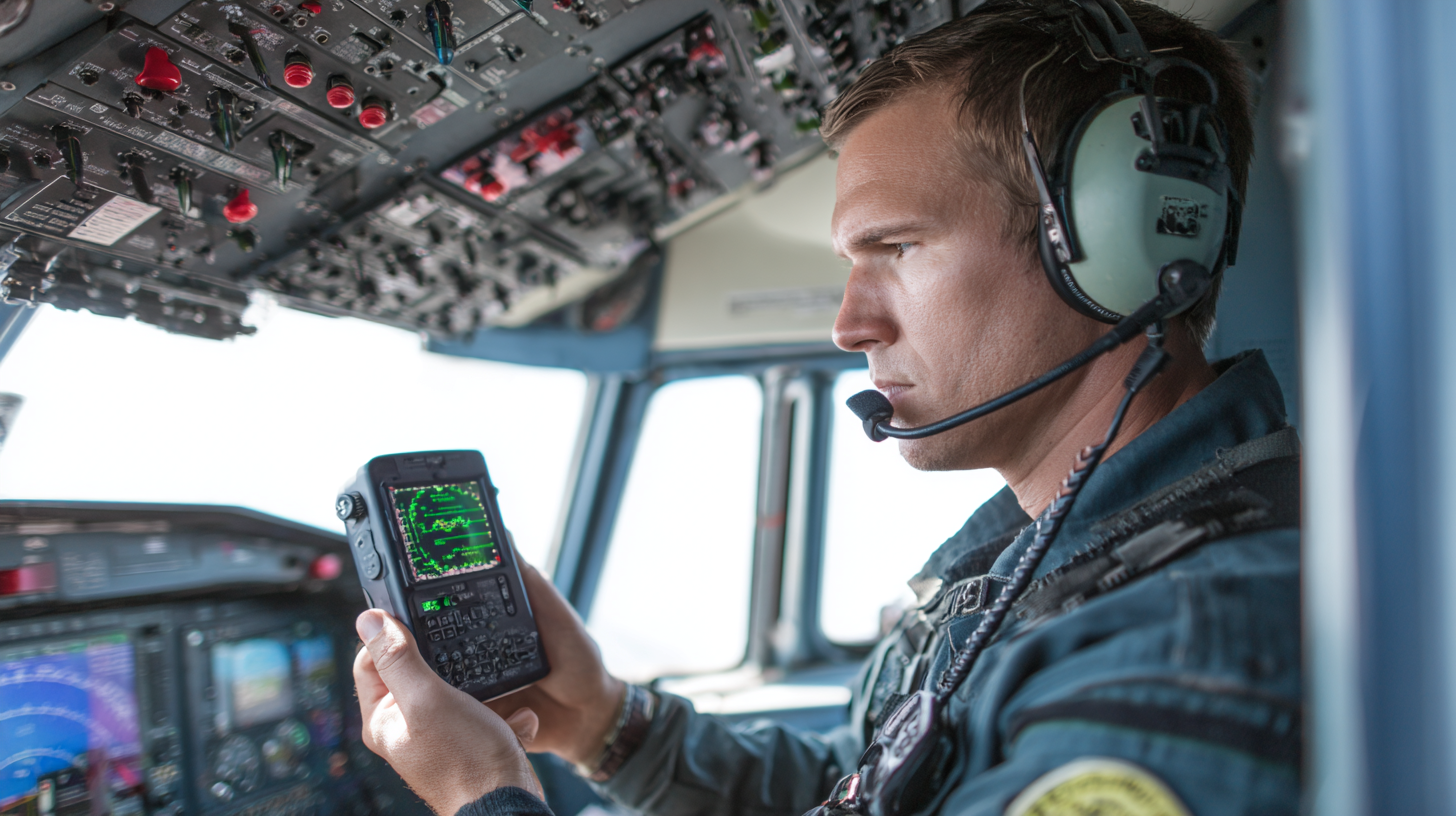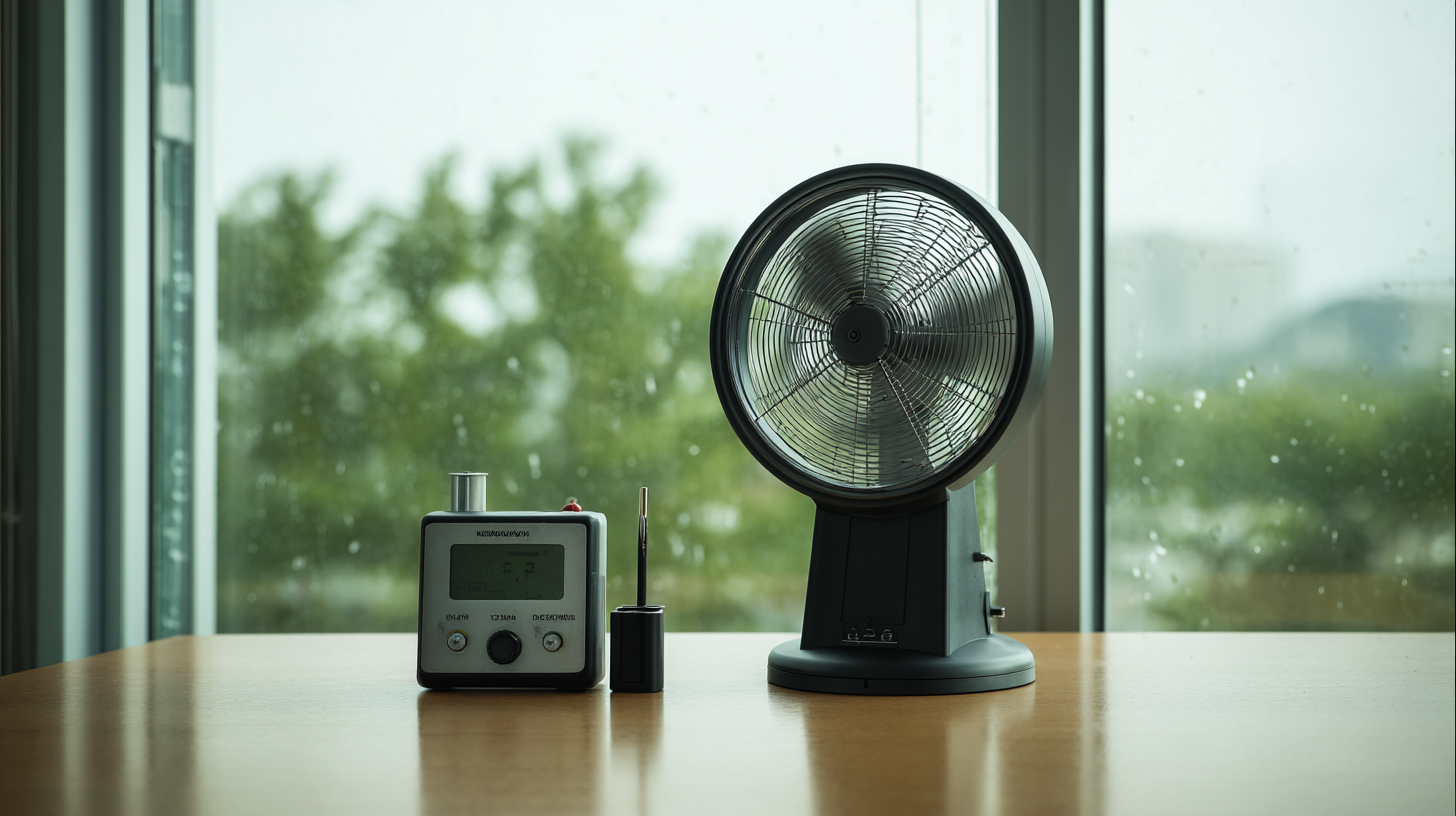
-
Home
-
Product Center
-
Application
-
Support
-
JT Cloud
-
About Us
-
Contact Us
Leave Your Message

When it comes to assessing airflow in various industrial and environmental applications, the decision between using an air velocity meter and an anemometer can significantly impact accuracy and efficiency. According to a recent market analysis by ResearchAndMarkets, the global anemometer market is projected to reach $2.2 billion by 2026, highlighting the critical role these instruments play in sectors such as HVAC, meteorology, and aerospace.

The air velocity meter vs anemometer debate often centers around precision, measurement range, and specific use cases. For instance, while anemometers are renowned for their velocity accuracy in natural and artificial airflow studies, air velocity meters offer versatility across different environmental conditions.
As professionals in the field weigh their options, understanding the strengths and weaknesses of each tool is vital for optimal performance, making it imperative to consider key factors before committing to one over the other.
When it comes to measuring air movement, both air velocity meters and anemometers serve crucial roles, yet they possess distinct characteristics and functionalities.
Air velocity meters are specifically designed to measure the speed of air in a certain direction, often used for HVAC assessments and laboratory experiments.
They provide precise readings that help in determining airflow rates, ensuring effective ventilation in various environments.
 In contrast, anemometers are typically employed in meteorological applications and can measure wind speed and direction. This tool is indispensable for weather forecasting and environmental studies.
In contrast, anemometers are typically employed in meteorological applications and can measure wind speed and direction. This tool is indispensable for weather forecasting and environmental studies.
Understanding the differences between these two instruments is essential for selecting the right tool for your needs. While air velocity meters focus on quantifying air speed within confined spaces, anemometers excel in open-air conditions and can even track changes in wind patterns over time.
If your primary objective revolves around indoor air quality and system performance, an air velocity meter may be your best choice. Conversely, for outdoor conditions or comprehensive environmental assessments, an anemometer would be more suitable, offering versatility in measuring varying wind conditions.
When choosing between the best air velocity meters and anemometers, understanding key features is crucial for ensuring accurate measurements. A comprehensive report by the International Society of Automation notes that precision is paramount; a variance of only 0.5 m/s can lead to significant discrepancies in specific applications, such as HVAC systems where optimal air flow is essential for efficiency. Thus, selecting a device with a high degree of accuracy is non-negotiable.
Another critical feature to consider is the measurement range. Different applications may require measuring various airflow conditions. According to the American Society of Heating, Refrigerating and Air-Conditioning Engineers (ASHRAE), devices that cover a wider range—from 0.1 m/s to over 30 m/s—are preferred in industrial settings, accommodating both low and high air velocity needs. Additionally, sensitivity and response time are essential; tools that can quickly adapt to changes in air velocity ensure real-time monitoring, which is especially critical in environments that require constant airflow adjustments.
Furthermore, the user interface and data logging capabilities of air velocity measurement tools should not be overlooked. A study by the Institute of Environmental Sciences and Technology indicates that devices equipped with advanced digital displays and connectivity features allow for more efficient data analysis and sharing, enhancing the decision-making process in environments like laboratories and industrial facilities.
When choosing between the best air velocity meter and an anemometer, accuracy and calibration play a pivotal role in the decision-making process. According to a 2022 report by the Institute of Environmental Sciences, devices that offer higher accuracy tend to be more reliable in both laboratory and field conditions. For instance, high-precision anemometers, like those utilizing ultrasonic technology, can achieve an accuracy of ±0.1 m/s, which is crucial for applications in HVAC systems and environmental monitoring.

Calibration is another critical aspect that influences the performance of these instruments. The The American Society for Testing and Materials (ASTM) recommends regular calibration for air velocity meters every six months, particularly for models used in professional settings where precision is a necessity. Failure to calibrate can lead to significant discrepancies in airflow measurements, which can be detrimental in settings requiring stringent airflow control. Reports indicate that improperly calibrated instruments can deviate by more than 15%, underscoring the importance of maintaining calibration to ensure reliability and compliance with industry standards.
When choosing between the best air velocity meter and an anemometer, cost-effectiveness and quality assurance become critical factors, particularly in the context of Chinese manufacturing. Many consumers and businesses are increasingly turning to Chinese manufacturers for instrumentation due to their competitive pricing. However, the challenge lies in ensuring that these cost savings do not come at the expense of quality. To navigate this, buyers should look for manufacturers with a robust reputation and a track record of reliability in producing precision instruments.
Quality assurance in manufacturing is paramount, especially when dealing with measurement tools like air velocity meters and anemometers. It is essential to consider certifications and compliance with international standards. Many Chinese manufacturers are improving their practices to meet global standards, employing stricter quality control measures and producing instruments that perform reliably under various conditions. By prioritizing manufacturers who demonstrate a commitment to quality, buyers can secure devices that not only fit their budget but also maintain the accuracy and longevity necessary for effective air velocity measurement.
When selecting between air velocity meters and anemometers, it’s essential to understand their application areas to make an informed decision. Air velocity meters typically find their usage in industrial environments where precise airflow control is crucial. According to the “2023 Global Airflow Measurement Market” report, industries such as HVAC, manufacturing, and pharmaceuticals account for over 60% of air velocity meter applications. These devices are ideal for monitoring ventilation systems, ensuring safety, and maintaining product quality.
On the other hand, anemometers are predominantly employed in meteorological and environmental studies. They are invaluable tools for measuring wind speeds and patterns, making them critical in aerospace, marine, and renewable energy sectors. The “National Weather Service” highlights that accurate wind measurements can improve predictive models by up to 30%, underscoring the importance of using anemometers in these fields.
Tip: When choosing between the two instruments, consider the specificity of your application. If you're focused on indoor air quality, an air velocity meter might be the best choice. For outdoor wind assessments, an anemometer is preferable. Additionally, ensure that you select a model with the necessary accuracy and measurement range to meet your specific needs.